Interviews
‘#AMFAD: All My Friends Are Dead’ Gets Bloody with Seven Deadly Sins-Inspired Killer [Interview]
A group of friends and influencers staying at an Airbnb are picked off one by one in #AMFAD: All My Friends Are Dead, directed by Marcus Dunstan (The Collector) and starring Jade Pettyjohn.
The upcoming slasher film, written by Josh Sims and Jessica Sarah Flaum, releases in select theaters, Digital and On Demand August 2.
The plot sees “a group of college friends rent an Airbnb for the biggest music festival of the year. A weekend of partying quickly takes a turn, as the group is murdered one by one, according to their sin.” Bloody Disgusting spoke with Marcus Dunstan and Jade Pettyjohn during the production of the film about the vibrant, candy-colored slasher with a bloody streak.
Dunstan, having co-written Saw IV-3D, is no stranger to the realm of slashers and gory horror. #AMFAD presented the filmmaker with a chance to play with the slasher formula, especially through the prism of social media and influencer culture. For Dunstan, it was the idea of how social media offers a blank canvas for identity and reinvention.
He explains, “There’s a number of details about this one that made me lean in. It was a chance to do a murder mystery through the prism of a civilization that’s still forming in that ever-evolving youth culture and in the way that they can create these characters in their lives. There’s the person they were before they picked up their smartphone. Once they picked up the phone, they could be whoever they wanted. Then, there are ramifications to those actions that result in who they become. In this case, from a writing standpoint, there’s a great character arc; we begin a tale with who they were and catch up with who they are. Oh, and someone from somewhere may not be done with them yet.”
“I enjoyed putting Agatha Christie into something that has the nice torque of a murder mystery thriller engine,” Dunstan continues. We’ve had so much good fortune up here in Vancouver with production design, special effects, and mostly with cinematography and performance, raising all these components together. I find myself always reaching back to Mario Bava and Dario Argento to add a little bit of that style into it and bring that into the mix, which is great. So, the slasher mystery gets an upgrade with this.”
![]()
For star Jady Pettyjohn, #AMFAD kept her guessing, and that hooked her immediately. “I remember getting the script, and it was the first time in a really long time when I read the script and didn’t actually expect what ended up when it ended up happening,” she said with excitement. “I’m usually pretty good at predicting, like, ‘okay, the script’s gonna go here, gonna go there,’ and it just didn’t work out that way. I was so surprised. I love that feeling.”
She continues, “I felt like the script does a really great job of paying homage or an ode to the older ’80s horror films that we all love, but it puts a new twist on it that is unique and different. I loved that. Then also Sarah, specifically my character. She’s super interesting, and I’ve never played a character like her before. So, that combination of both was just sort of the perfect storm.” Sarah stands out immediately as the kind-hearted one of the group, but expect this bunch of friends to harbor a variety of dark secrets.
Dunstan is also no stranger to horror comedies, having recently helmed Unhuman, and details how #AMFAD will first lean into humor before pulling the rug out from under audiences.
He teases, “We want to introduce these characters at their most brash, their most loud; their false personas, if you will, the personas through the phone, the three by four window to their entire lives. In doing so, how are they entertainers to the populace of strangers watching them? It’s outrage humor like, ‘ooh, avarice,‘ everything to come to the fore. Then to bring that a little bit into the second act, when things are getting a little more creepy. Well, the humor then becomes the stakes of how they innocently wander in by the time we have to get bloody and nasty. Then, the shock value, I think, replaces some of the jokes because you should surely be jumping and laughing at the same time. Then we’ve hit our stride.”
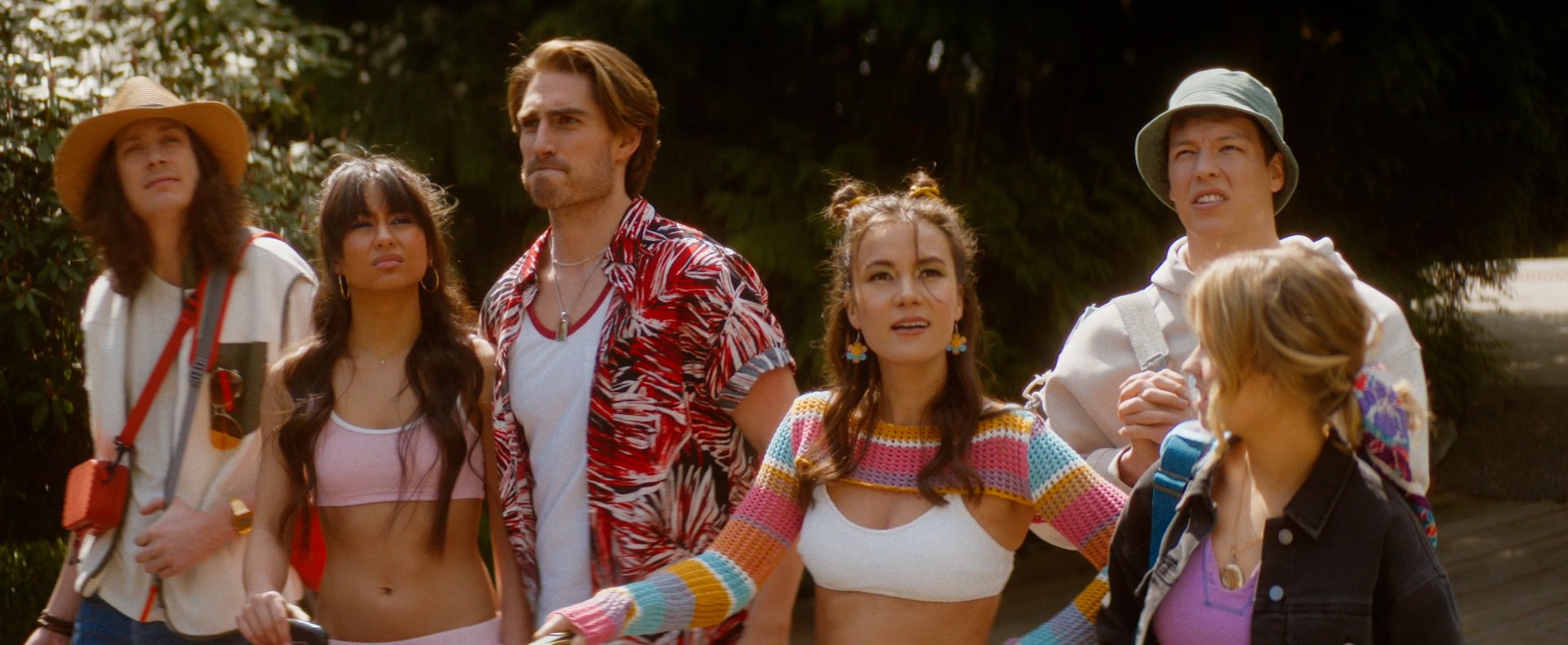
The filmmaker also knows that #AMFAD isn’t the first horror movie set in and around an Airbnb, or influencers, for that matter.
“Well, the nice thing about this is I wanted to lean into some things we’ve heard of before in this,“ Dunstan says. “There has been Airbnb thrillers. This is a movie that takes place knowing there’s a movie called Bodies, Bodies, Bodies. This is a movie that takes place knowing there’s a movie called Seven. These people have been exposed to all that pop culture, and this is that little pocket that’s reacting to it, almost as if, like, ‘Wait, is this? Uh, is this someone trying to get attention for stuff that we already kind of know?’ Once we begin to card flip the twist, you see how that plays off.“
It’s also worth noting that the killer themes their kills around the seven deadly sins, and that played a crucial role in the film’s visual language.
“Oh, in terms of the visuals, it was instantly collaborating with our production designer Trevor Johnston to come up with the benchmarks,“ Dunstan explains. “We wanted to build up and around the biblical interpretations of the deadly sin, going into the psychology of them and how some of each sin has been assigned a color spectrum throughout time. Some are kind of flip-flopped here and there. So then simply saying, ‘Okay, if this character is courting towards this particular sin, what is the color pattern of that sin?‘ In doing so, there’ll be a flourish in the clothing and the act and whatnot. By the time you get to a potential demise or threat level, well, what if the lighting was also accompanying that? So it begins as a hint and graduates into a fever dream. You can turn the sound off and see the colors are also telling the story, and the set is also telling the story as something innocent, tiny, and offered through social media or whatnot, come back and it charges in as a reality and then all-encompassing, kind of like real punch of color, sound, and violence.“

But how bloody will #AMFAD get, you might be wondering?
Pettyjohn laughs, “There are so many dead bodies behind this camera. But oh my god, it is so much fun. You know, obviously, the piece is really dark, and there’s lots of murder and blood and guts and stuff. But making a horror film is, in a weird way, incredibly joyful. We have such talented people that are doing just absolutely incredible work. It was so funny. I was having this conversation with the makeup artist, and she pulled out a chest full of different kinds of blood. Like, okay, where are we going to do it? Here, here, this, this consistency is perfect for this and all of that. And it’s an absolute joy, honestly, to play with so much blood and guts and special effects.”

Interviews
The Hell Heartbeat: ‘Longlegs’ Sound Designer Eugenio Battaglia Reveals Hidden Messages & More [Interview]

Putting aside the raging debate about whether it is, in fact, the “scariest film of the decade,” one thing we can all agree upon is that Longlegs is, at the very least, off putting. There’s something about Osgood “Oz” Perkins’ latest that gets under your skin, even if it doesn’t necessarily reduce you to a total quivering wreck (as some of the more hyperbolic reactions would have you believe).
Maybe it’s Nicolas Cage’s bloodcurdling transformation into the titular Manson-esque killer that sets you on edge. Or perhaps it’s the grisly murders he enacts, the recurring motif of sinister eyes peering out from the shadows, those hidden devils that are artfully concealed in the frame, or the lingering cinematography that gives you an unshakable feeling that something dreadful could happen at any moment. Whatever causes you to squirm, there’s no denying that Longlegs is filled with all kinds of unsettling imagery.
However, those visuals are only one half of the chilling equation here, with the audio doing a lot of heavy lifting of its own. Indeed, while Eugenio Battaglia’s sound design might not be as attention-grabbing as, say, Cage’s gonzo performance or the striking violence that’s peppered throughout the movie, it still does an excellent job of subtly worming its way into your brain, in a way that feels almost violating. Much like the dolls that Longlegs uses to spread his malign influence across the United States.
To find out more about how he pulled off this psychological assault on your senses, we sat down with Battaglia for an exclusive interview. Among other things, we learned how he covertly smuggled hidden messages into the soundtrack, how he imbued Nic Cage with a sense of rock star “Glam” during his (characteristically memeable) singing scenes, and why he thinks you haven’t truly experienced the movie until you’ve seen it at home.
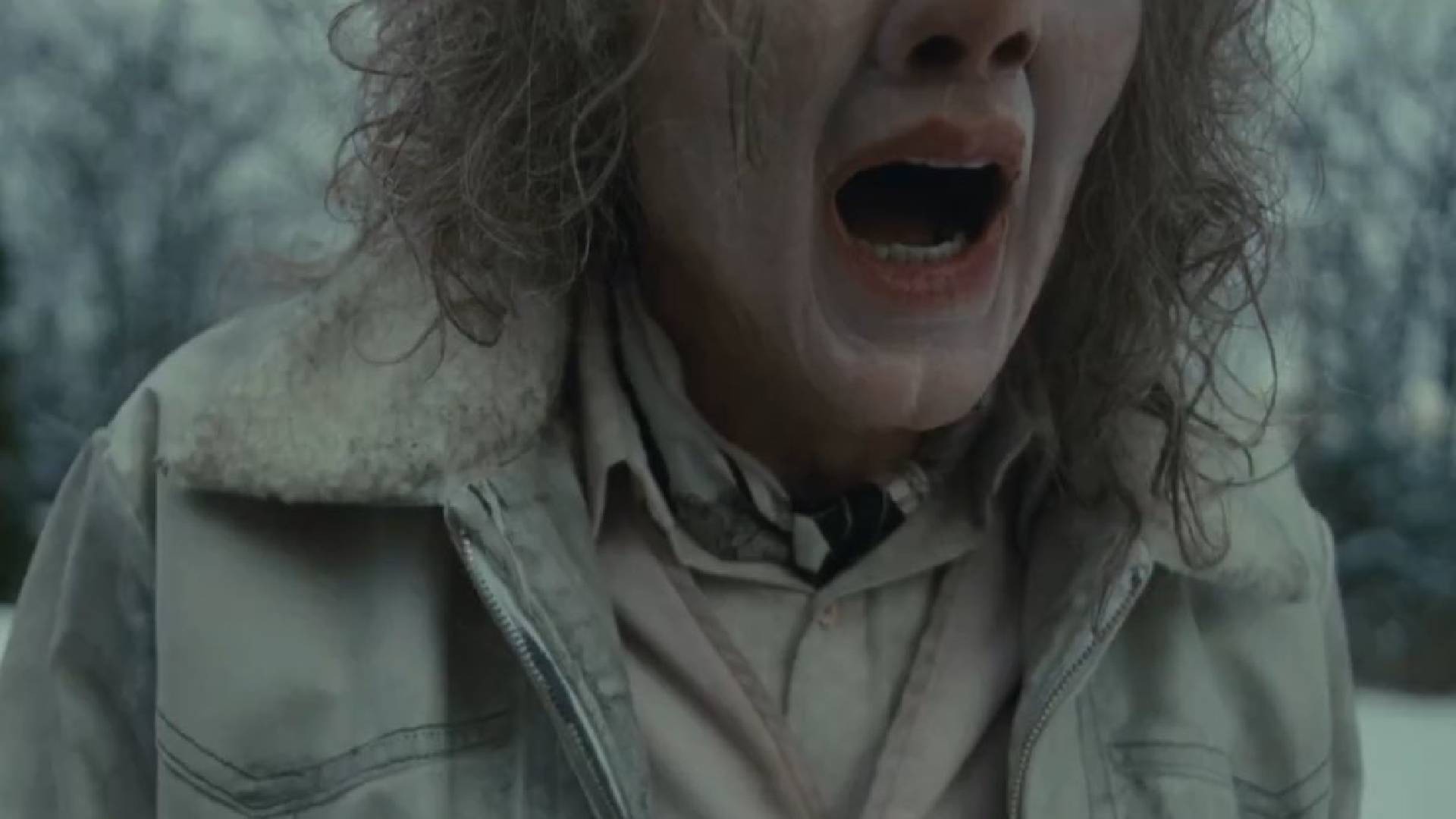
Bloody Disgusting: I want to start by congratulating you on the film. Not only has it clearly resonated with audiences but, when it comes to your contributions specifically, it’s one of those rare instances where the audio makes just as big an impression as the visuals.
Eugenio Battaglia: Thank you very much!
BD: So, my first question is: How did you come up with the disturbing soundscape of Longlegs? Was Oz Perkins prescriptive about what he wanted, or did he give you free rein to do your own thing?
EB: You know, Oz wasn’t too [explicit] about what he did want from the sound. Instead, he gave me a few restrictions and named the things that he didn’t want. Which is really appreciated direction actually. As a sound designer, you have so many options at your disposal, and it can become quite overwhelming trying to decide which tools to use.
Yet when some of those choices are removed for you, it does help with the creative process. The limitations force you to think outside of the box if you know what I mean.
BD: And what parameters did he give you exactly?
EB: Oz wanted it to feel like something was being transmitted or “projected” onto your brain. Similar to what is happening with the main character [Agent Lee Harker]. But he wanted me to accomplish that without resorting to any obvious, on-the-nose techniques. Then he also mentioned that he wanted the movie to have this sort of Rock n’ Roll vibe. Considering about those two stipulations, I thought: “Maybe the whole thing could play like a ‘70s record!”
And, following that train of thought, I then bought this 360-mic and started messing around with the windscreen: using towels, bowls and stuff like that. It produced this hypnotic crackling sound [like one you might hear on a vinyl] that you can trace throughout the film. And from there I also started experimenting with subliminals.
BD: That segues neatly into my next question. I’ve read there are some secret audio effects here that have been reversed, in a manner reminiscent of backmasking. Presumably, that’s another way you’ve tried to make the soundtrack here evoke a creepy old record, like those ones that are supposed to have hidden satanic messages.
EB: Yeah, that’s true! I’ve watched the movie in reverse myself and those [cues] aren’t super obvious to be honest. But you can definitely make out some things if you listen closely enough.
All I did was grab the mic and whispered these sinister things as if I were Longlegs. I’d call out “Harker,” for instance, and I also did some funny stuff like murmuring: “Give us good reviews!” A lot of that was then reversed and played over the quick flashes of disturbing imagery that you see intermittently throughout the movie. You know, those bits that sound like Sauron’s [Black Speech] from The Lord of the Rings. That’s all me!
Probably the most prominent example of reversed audio that you can hear, however, is a pair of recordings, one of myself and another of a priest, reciting the Lord’s Prayer. They’re used over the montage of Harker pouring through the files. I searched “How to summon a demon” and apparently doing the Lord’s Prayer backwards is the top result!
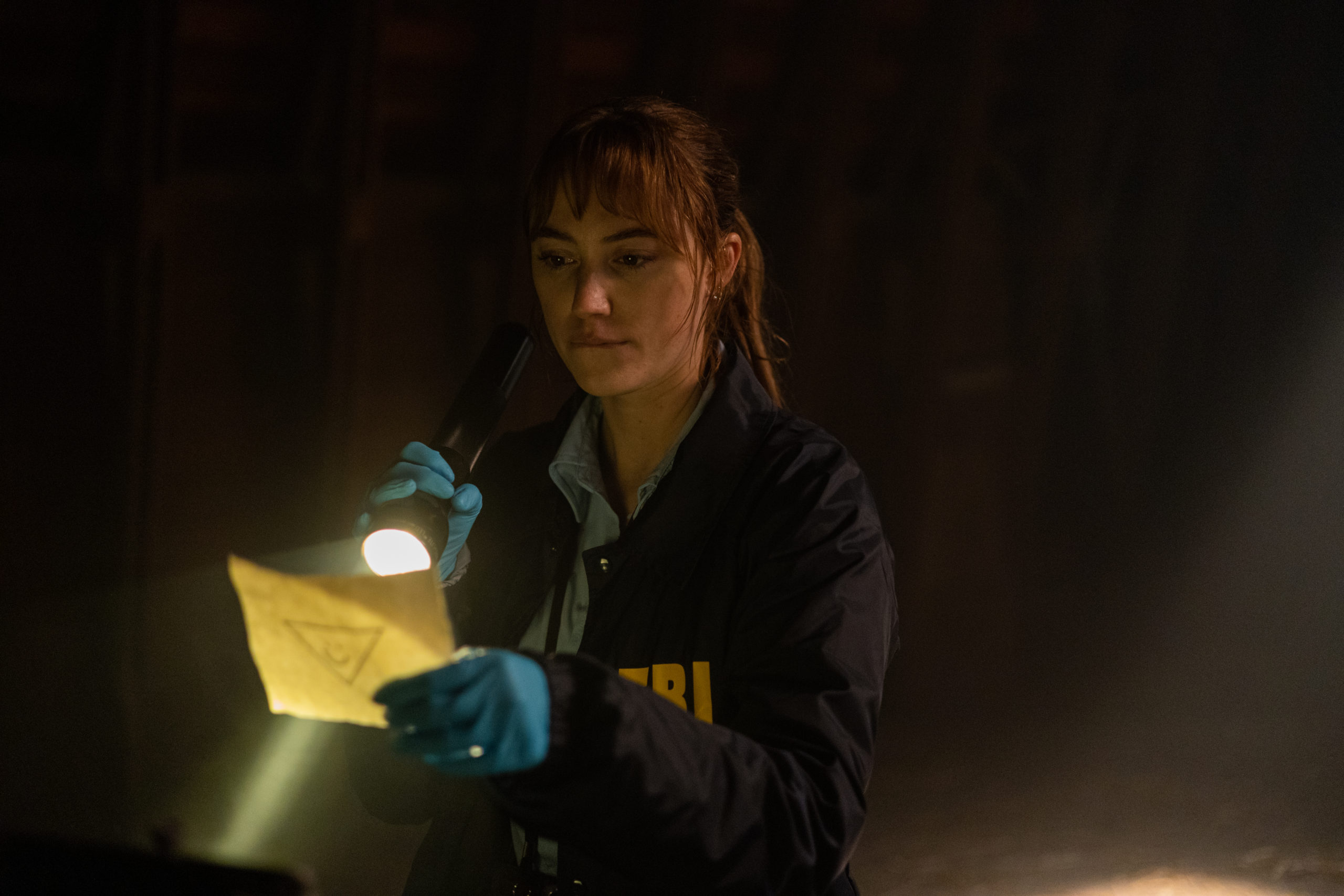
BD: If they’re so inclined, will people be able to hear that when the film is available to watch from home and they scrub through it in reverse? Or have other effects been added to make the recordings even less recognisable?
EB: I am pretty certain you will be able to make out the Lord’s Prayer at least. The other thing you might notice isn’t even vocal, but it’s still a huge part of the soundtrack.
There’s an effect I call “The Hell Heartbeat” which pulsates throughout the whole movie, as if it is calling out to Lee. That one is just a [backwards] recording of me stomping up and down my stairs at home, layered with a bit of Foley. If you reverse the film, you can definitely tell that’s what you are hearing.
BD: That’s really cool! Another thing that stood out to me is that it’s a very quiet flick. There are long stretches of dead silence where no one is talking, where there’s little in the way of background ambience, and where music is conspicuously absent.
EB: Yes.
BD: Fortunately for me, everyone in my screening was locked in, but that’s still a pretty big risk to take, isn’t it? Having it be so subdued when horror multiplex audiences are known for being rowdy.
EB: Oh, I was super worried about that! I went to see Immaculate and The First Omen recently and, in both cases, the experience was ruined by other audience members just being disrespectful. All around me, people were on their phones, they were talking, and they were making fun of what was happening on screen. I remember one teenager even had headphones on and was listening to something else entirely. I was like: “Holy crap! How short can your attention span possibly be?”
After those experiences, I was kind of terrified about the implications it had for Longlegs. I was thinking: “Oh my god, are people going to be talking all the way through our movie?”
Luckily, the couple of times I’ve been to see it that hasn’t happened. I guess there’s enough tension to keep people off their phones. Which is a huge win for me. But you’re right, it was totally a gamble to have it be so quiet in the first place. It could have easily backfired.
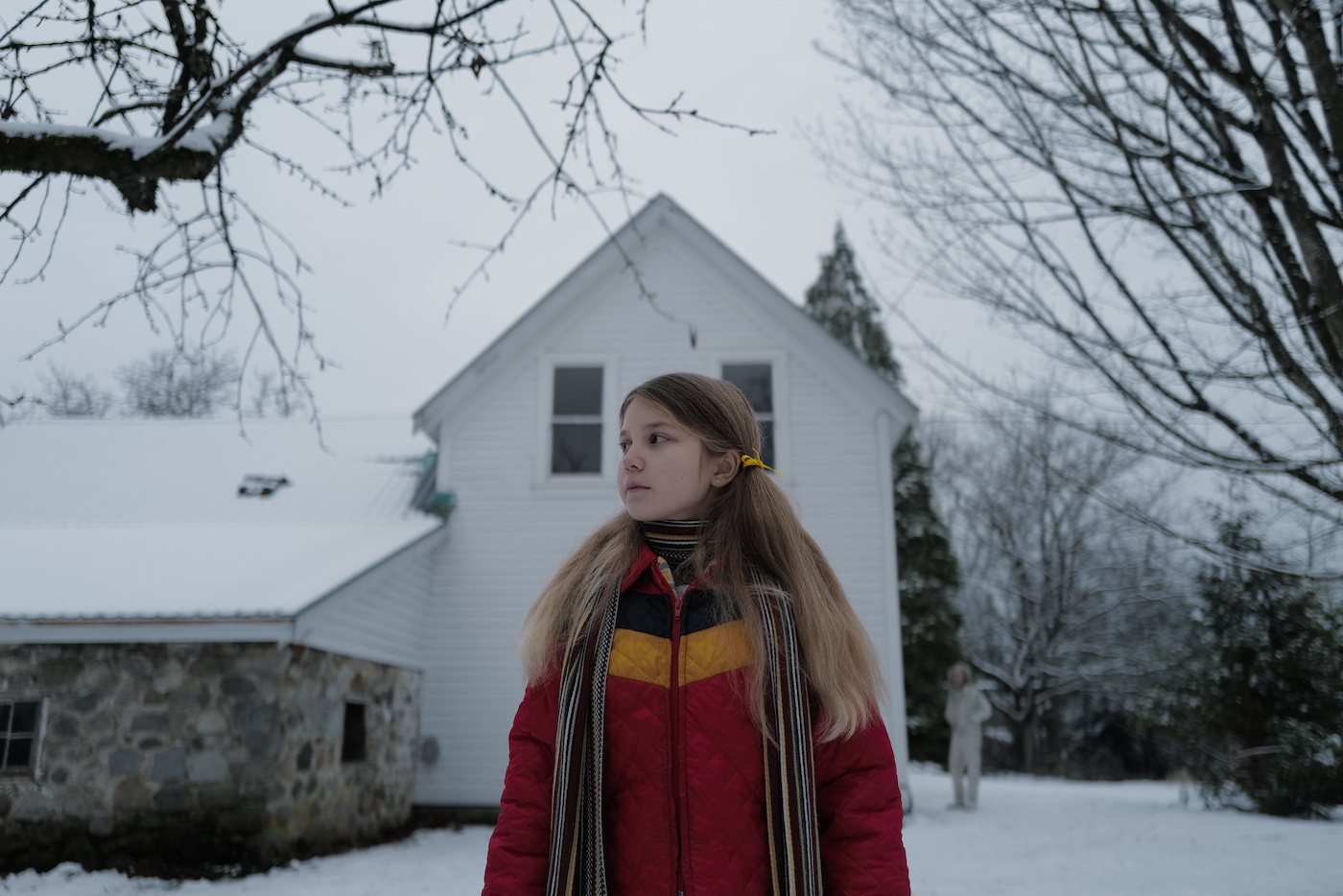
BD: And was it your decision to take that risk or did the direction come from Oz?
EB: Everything related to sound was in my creative control, yes, but the director is the one who makes the ultimate call when it comes to approving the final mix. I think, in this case, it was just a coincidence that Oz and I have similar tastes. I’d obviously seen his previous works and was a huge fan of The Blackcoat’s Daughter and I Am the Pretty Thing That Lives in the House. So, I knew he was into his quieter, more subdued stuff and approached it with that style in mind.
Like him, I want you to be able to hear the details of every individual floorboard creek and footstep. I don’t want them drowned out by music or ambient noise.
From a horror perspective, that quiet also lulls you into a false sense of security and makes you vulnerable to the next big hit. There aren’t many [jolts] in Longlegs but that only makes the couple we did sneak in all the more effective.
BD: Yeah, it’s pretty light on jump scares isn’t it? How did that impact your work as a sound designer?
EB: It was all about me doing my own thing and my primary focus was the mind control element. Strangely enough, one of my biggest influences in that respect was actually ASMR. I wanted to try and distil the hypnotic effect that people get from that; only here it is much less relaxing and far more unsettling!
Oz was also very adamant about not doing those horror tropes like jump scares. He loves the genre but doesn’t watch many contemporary releases. He just has zero interest. As such, he doesn’t really give you any horror reference points to try and emulate. Instead, he likes to make his films rich on other, outside influences –
BD: Like rock n’ roll?
EB: Exactly! He always emphasized that this was, at its core, a rock n’ roll movie and a story about mothers. But he never once labelled it “horror” or mentioned the Devil when describing what he was going for. Which made me tackle things in an altogether different way.
BD: Do you have any examples of how his unusual steer influenced the direction you took?
EB: One that springs immediately to mind is that the movie is full of gongs because of what Oz said! [The T-Rex track] Bang a Gong is quite a big part of Longlegs as you’ll know. The film opens with a quote from its lyrics and then ends with it playing over the credits. So, I thought it made sense to include a bunch of gong sounds throughout. I then reversed these, and it resulted in a strange humming noise that [characterises] the frequency of those metal ball bearings inside the dolls.
[The rock n’ roll idea] also influenced how I approached the character of Longlegs himself. When Nick Cage is going nuts and singing, Oz wanted him to sound “glam,” rather than demonic. It was one of the hardest challenges for me to figure out, because I wasn’t sure if that meant I needed to add reverb, delay or what.
In the end, I found this cool electric guitar and I pitched it to [Nick’s] voice whenever he’s going into that super high register. It makes it sound like he’s tapping into some crazy satanic vibe.
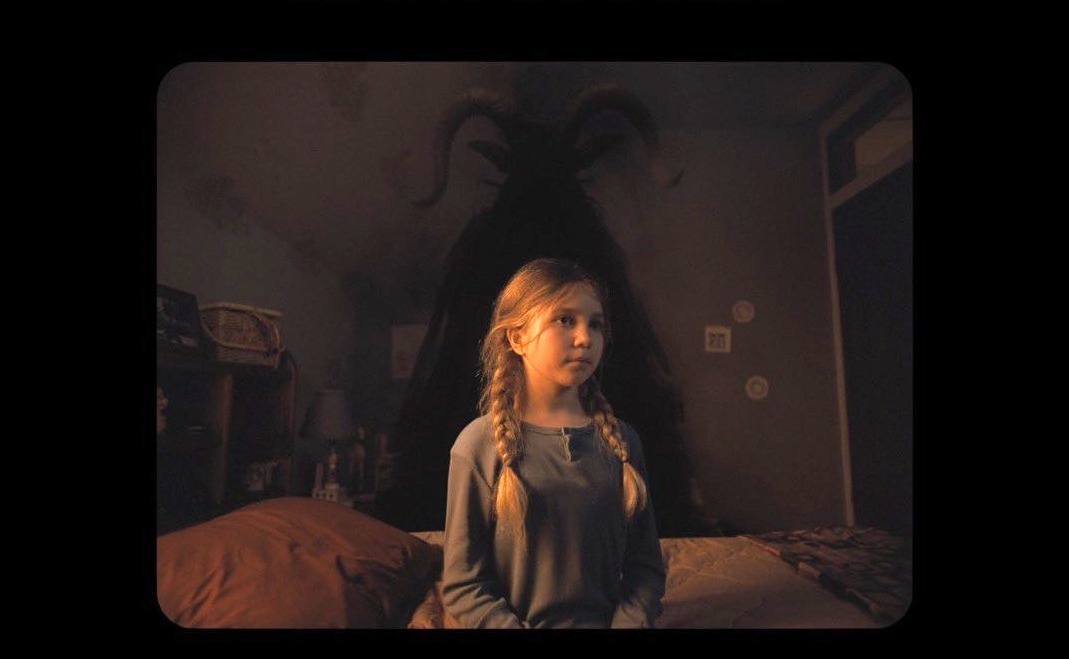
BD: As we just discussed, I had the privilege of watching this in a cinema with near-perfect conditions. Over the speakers, I could hear every ambient hum and ominous whisper. But I’m curious if that’s the target audience you have in mind when you’re putting together the audio mix for a film nowadays, or if you have to cater more to those watching at home or on streaming?
EB: I definitely think about the TV, but it’s the last thing I do. In music, we have this thing called “the car test” [whereby recordists use the sound system of a car radio to do a final pass on their track, making sure it works in every possible environment]. For me, working in the film industry, the equivalent of that is “the TV test.”
The thing is, I personally love watching movies with headphones. To me, that’s the optimal experience. You get great surround, base frequencies and dynamics. So, I kind of develop my mixes with that in mind.
With Longlegs, a lot of the stuff that I recorded on my mic [like rubbing the windscreen with a towel or the reversed whispering] are stereo effects. You can only truly appreciate that with headphones on, as it makes those noises sound like they are enveloping you and coming from behind.
BD: I’ve gotta say, I think that would be unbearably tense. Watching this film alone at night, with your creepy audio being piped directly into my ear, would be pure nightmare fuel.
EB: That’s what I mean! These horror films can work on the big screen for sure — Paranormal Activity scared the shit out of me in the theater — but they can be absolutely heart-stopping when you’ve got headphones on.
And I think that’s true of Longlegs. It really is a whole new experience if you listen to our movie with headphones. I’m stoked for people to have that opportunity when it releases at home.
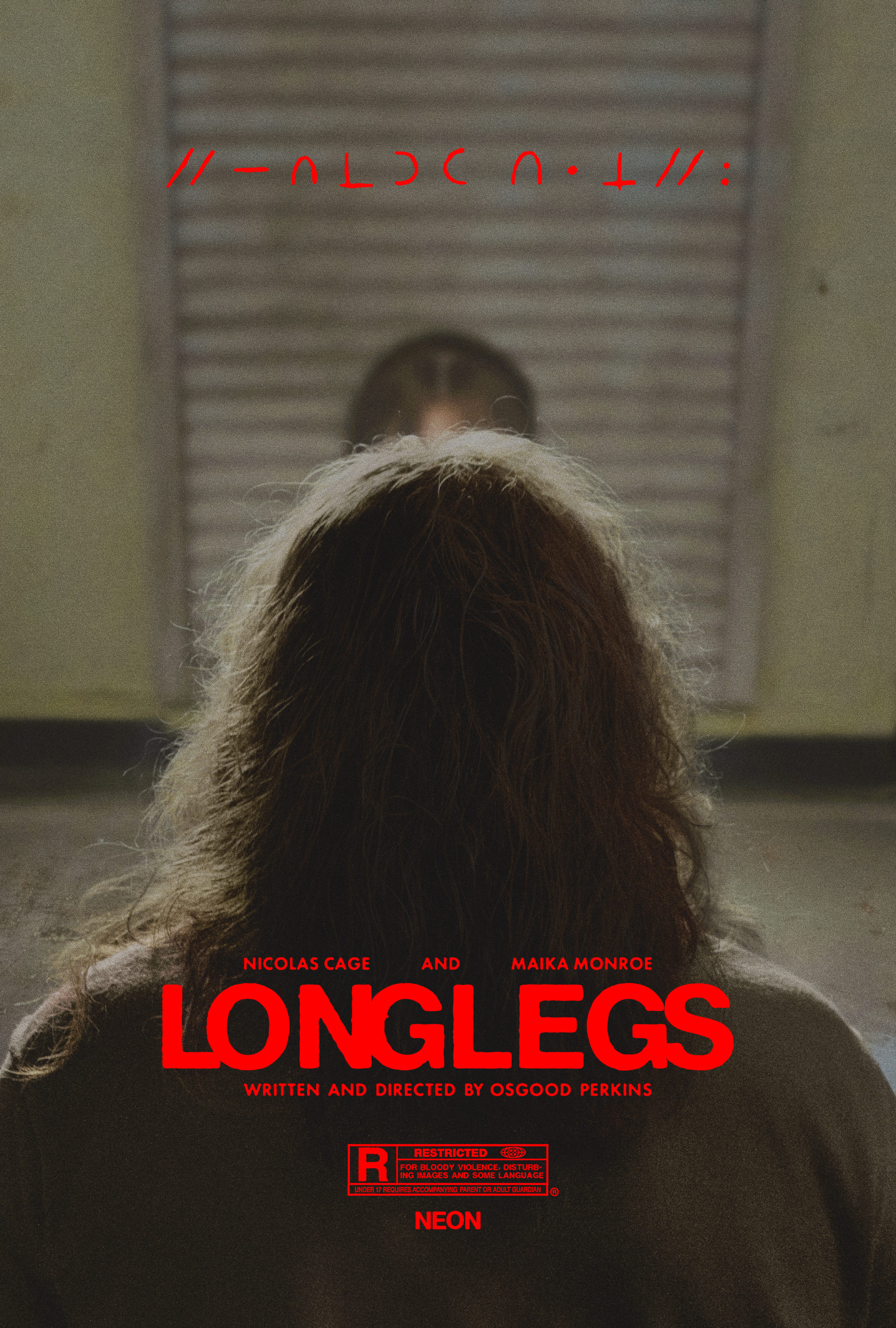
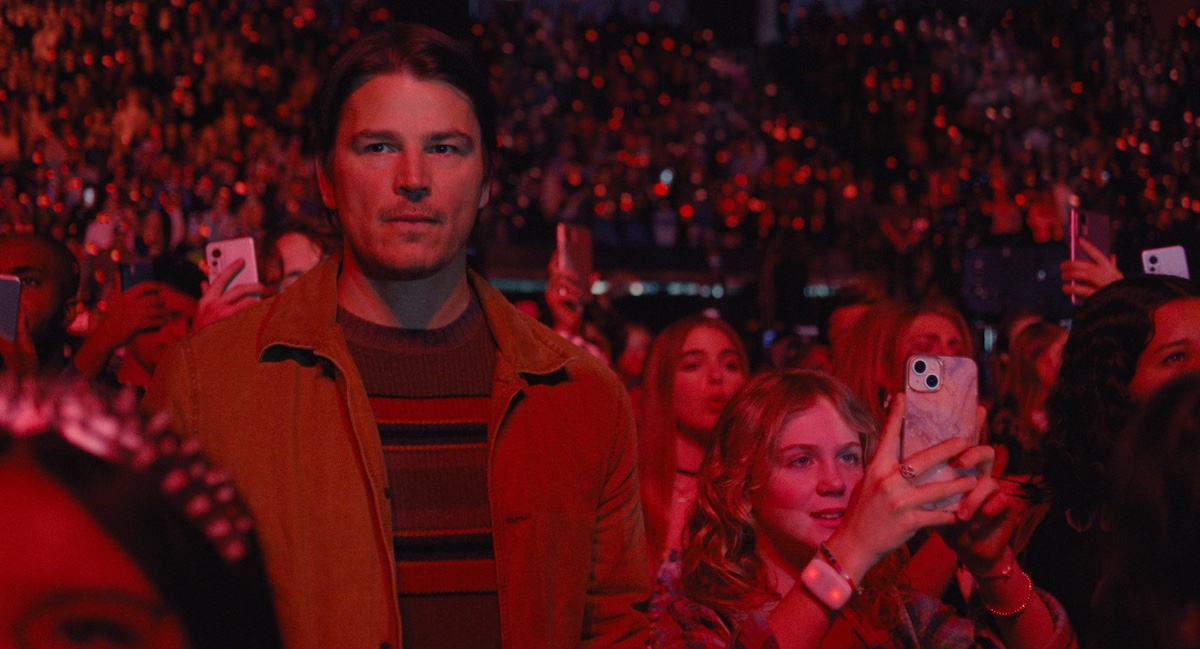

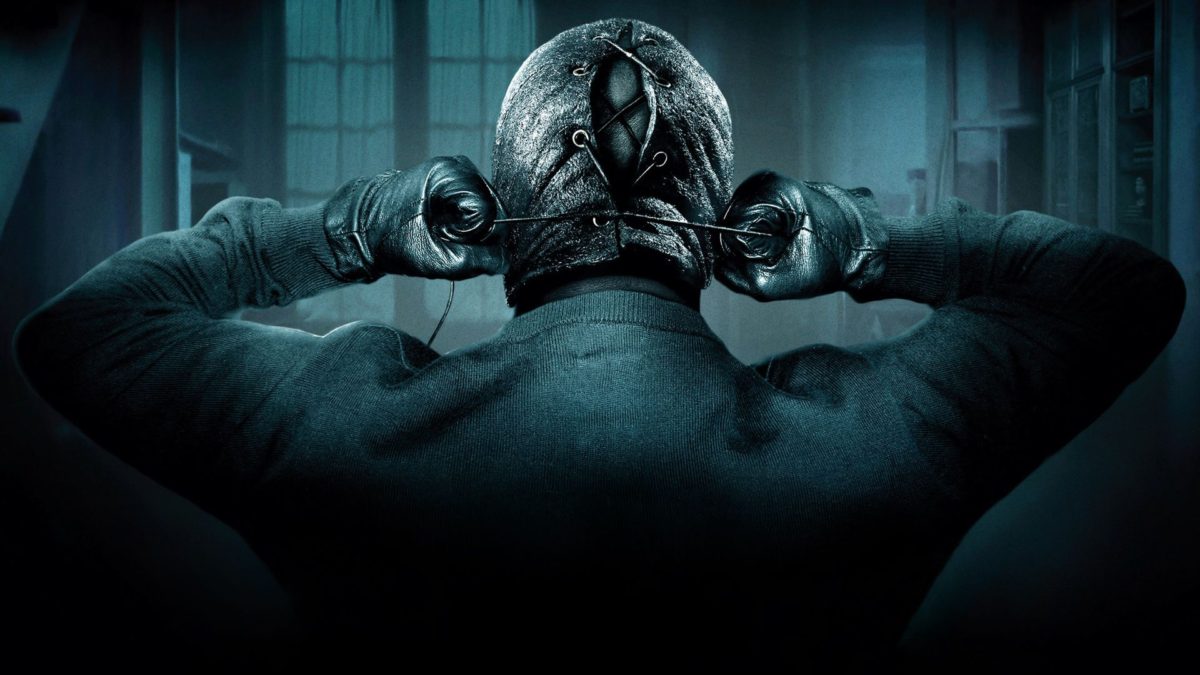
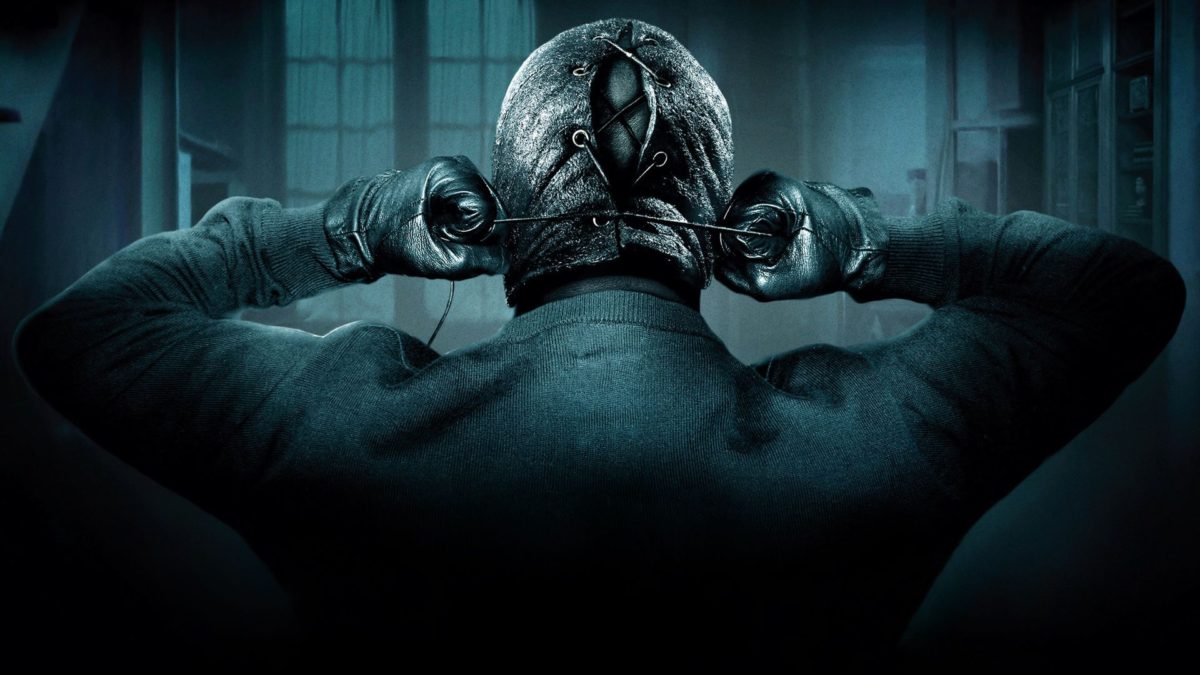




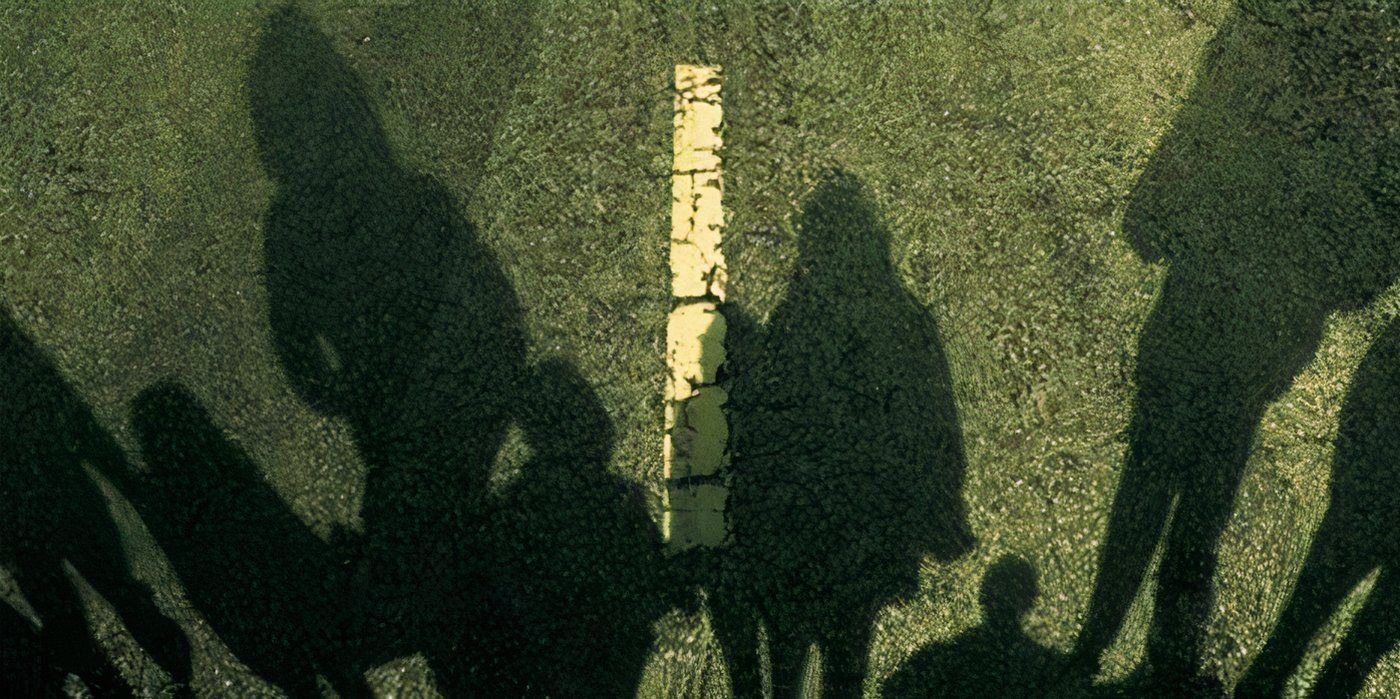



You must be logged in to post a comment.